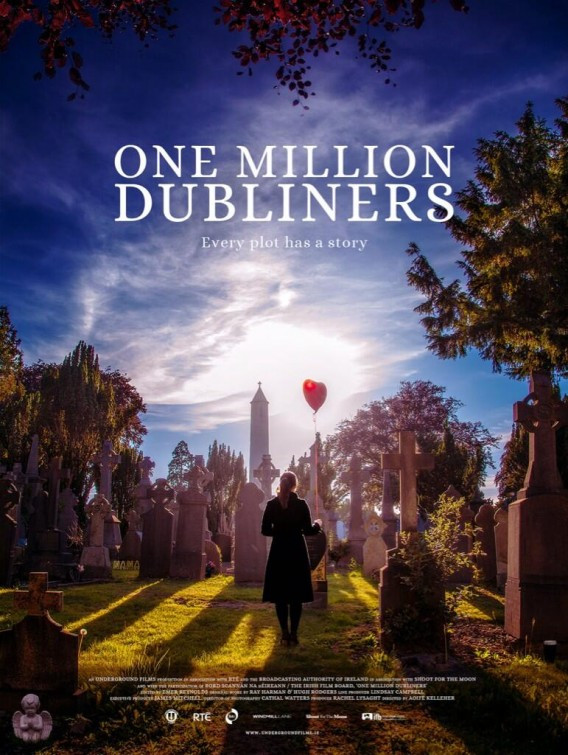As Arlington is to Americans, so Glasnevin is to Irish people. That is how important Prospect Cemetery in Glasnevin is to Ireland and to Irish history. This resting place of more than one million Dubliners is Ireland’s largest non-denominational cemetery, covering 124 acres and 180 years of history. Many of Ireland’s notable historical figures are buried in Glassnevin, from political leaders such as Daniel O’Connell, Charles Stewart Parnell, Michael Collins, and Éamon de Valera, to artists Brendan Behan, Christy Brown, and Luke Kelly of the Dubliners. But more importantly the graveyard contains ancestors of the inhabitants of modern Dublin, linking our present and past like no other place. Being such an historic and iconic Dublin landmark it is only fitting that the cementery be immortalised in film, which bring us to Aoife Kelleher’s new documentary One Million Dubliners.
One Million Dubliners offers a window into the history and day-to-day life of the cemetery, as told through the eyes of Shane MacThomais, the cemetery’s historian who sadly passed in March 2014. An engaging presence, MacThomais carries this film, offering a warmth and humour that allows the film to ebb and flow between laughter and melancholy. Glasnevin is an active cemetery and Kelleher’s camera captures the importance of both its role as a landmark, and its function as the final resting place for friends and family. It would be easy for this to become saccharine or overly emotional, but by relying on MacThomais as the audience conduit we are never over-saturated in nostalgia or emotion.
Cathal Watters’ cinematography is sublime, catching the cemetery in all the best lights, a warm glow juxtaposing the greys, browns and greens of the graves and their environs. This ethereal feel, plus the long, wordless sections highlighting the decay of certain sections of the cemetery do threaten to derail the film, but again MacThomais brings the film back in line. He is not alone in the narration duties, with others offering unique insights, poignant personal stories, and entertaining tales to enrich the stunning visuals. It’s not all perfectly pitched however, as certain sections and stories cause tonal imbalances, particularly when the story shifts to talk of money and how the cemetery has seen a decrease in government funding. There’s a change in music here that is perhaps not the best judged.
One Million Dubliners could have been a simple, run-of-the-mill documentary about an important place, but instead is elevated to be something more by the immensely engaging presence of its key narrator. A story of Dublin that says a little bit about all of us, and a must see for all people with ties to the city.

